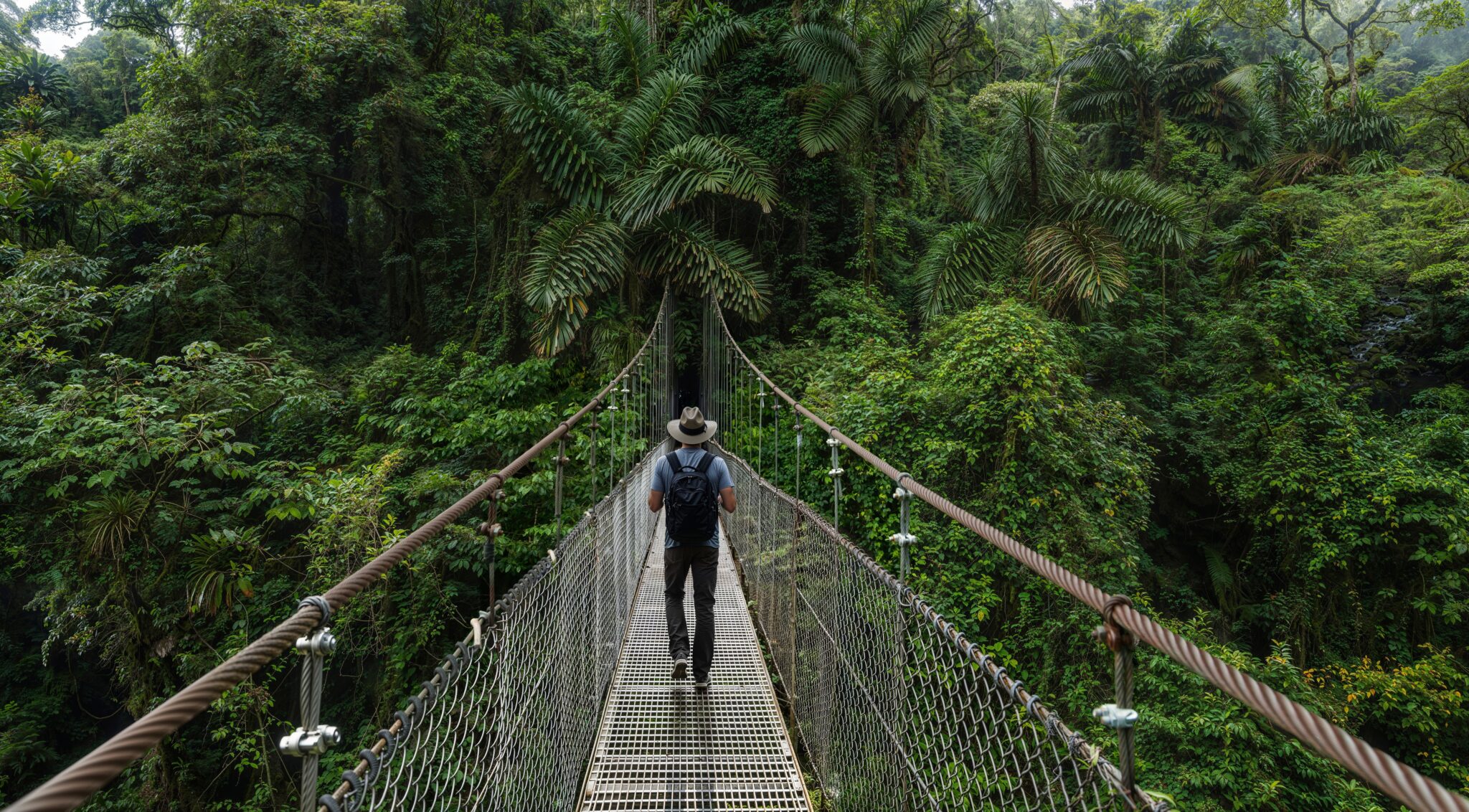The world is filled with destinations that transport travelers to places where few have ventured. They offer experiences that are not just unforgettable but life changing. Among the most extraordinary and diverse places on Earth are Mongolia, the Lofoten Islands, and the Amazon Rainforest. Each offers its own kind of adventure, beauty, and culture. Each is an experience far removed from the ordinary.
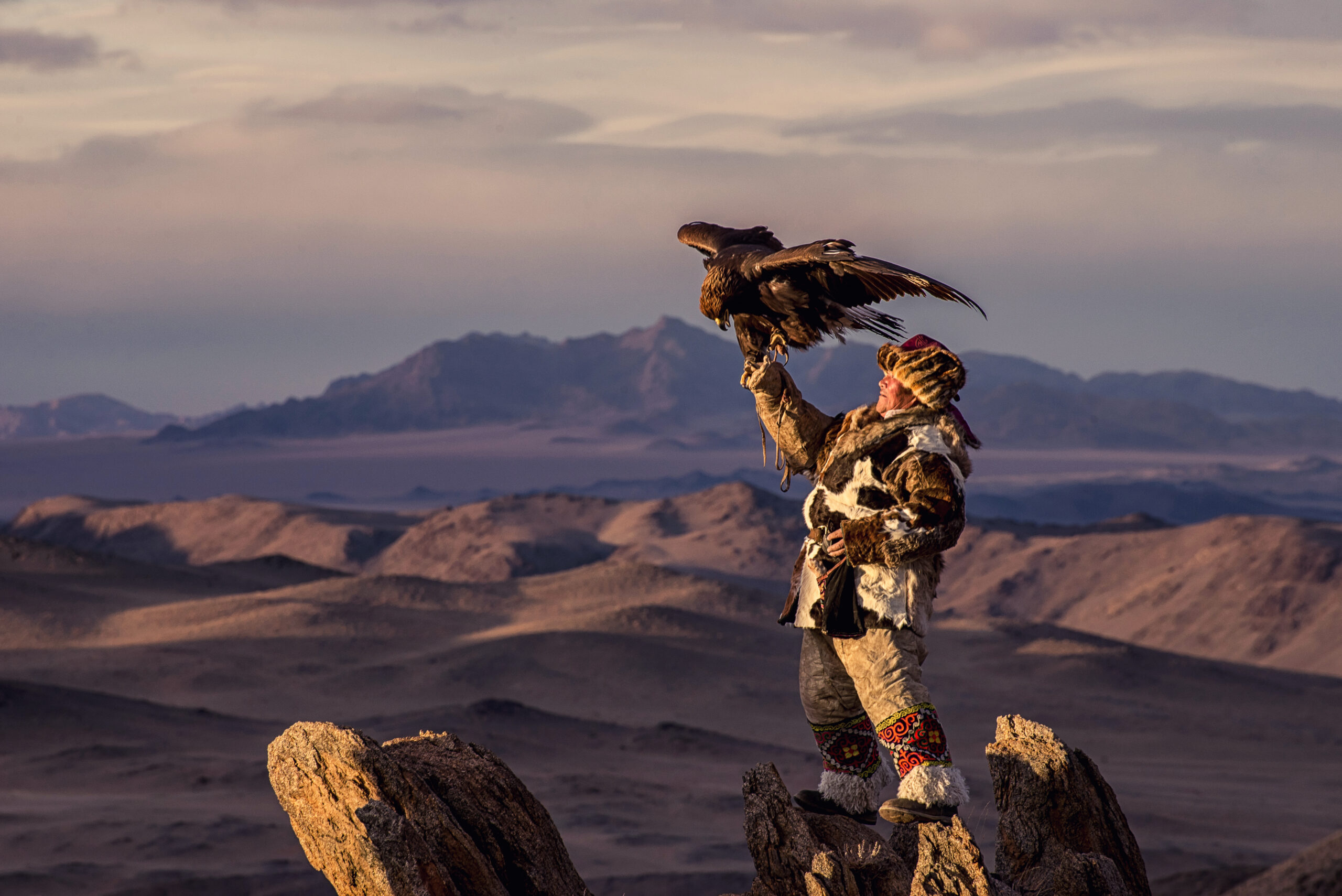
A Land of Vast Wilderness and Tradition
Mongolia is one of the last places on the planet where ancient ways of life remain intact amidst its vast, rugged landscapes. Sweeping steppes, expansive deserts, and towering mountain ranges all offer a unique glimpse into both the natural world and a culture that has been shaped by that world for centuries.
For those willing to venture off the beaten path, are into adventure travel, and are willing to sometimes rough it, Mongolia offers unique and unforgettable experiences that will never be forgotten. Whether you’re riding across the Gobi Desert, staying with nomads in a traditional ger (yurt), or experiencing the famed Naadam Festival, Mongolia is a place where the wild, untouched landscape and ancient customs come alive.
The best time to visit Mongolia is during the summer months, from June to September, when the weather is relatively mild and accessible for outdoor activities. Winter, though harsh, can be an incredible experience for the more adventurous traveler. The temperatures often drop below freezing, but the crisp snow and clear skies offer breathtaking views of the land, along with the chance to visit remote areas with fewer tourists.
What to Visit in Mongolia
The Gobi Desert – One of the most famous deserts in the world, the Gobi offers an immersive desert experience where you can ride camels, explore ancient Buddhist monasteries, and even discover dinosaur fossils at Bayanzag (The Flaming Cliffs).
The Altai Mountains – These towering mountains in the west of Mongolia are home to the Kazakh eagle hunters, whose traditional hunting with trained golden eagles is a practice that has been passed down through generations.
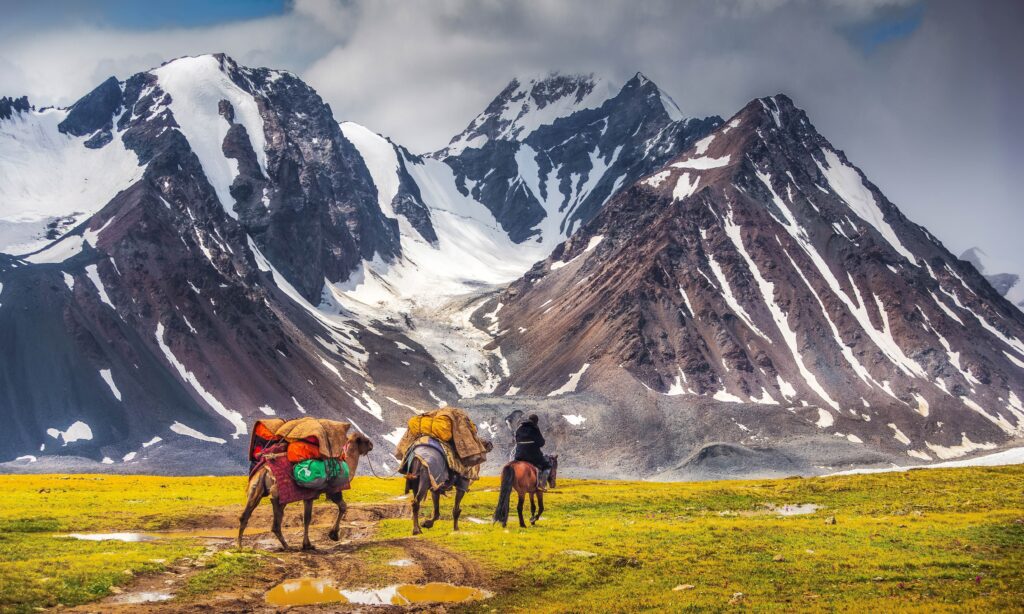
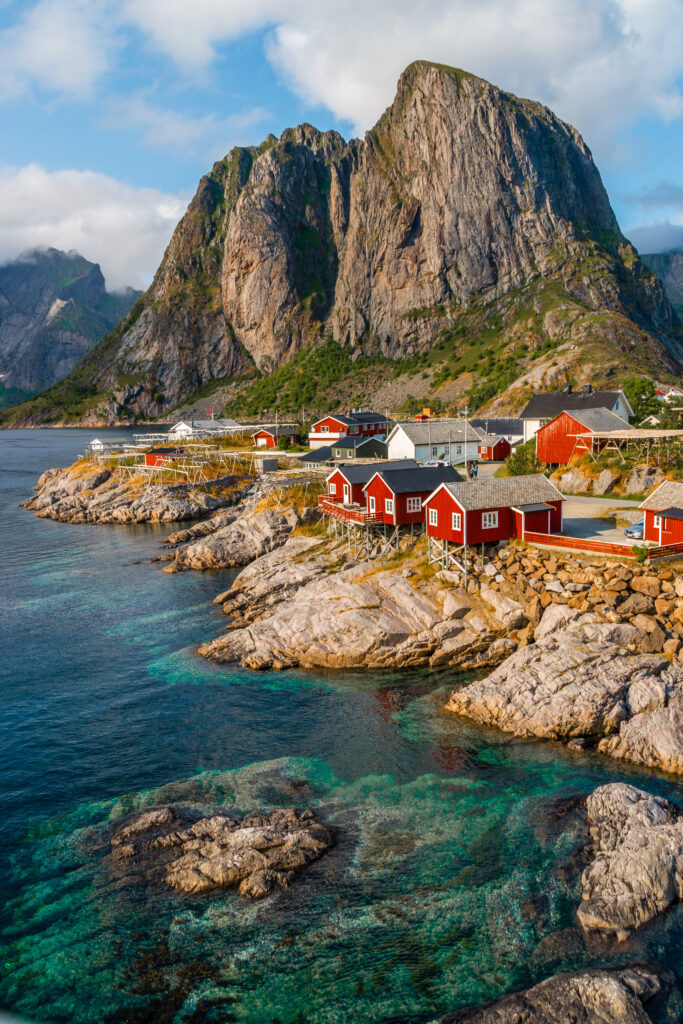
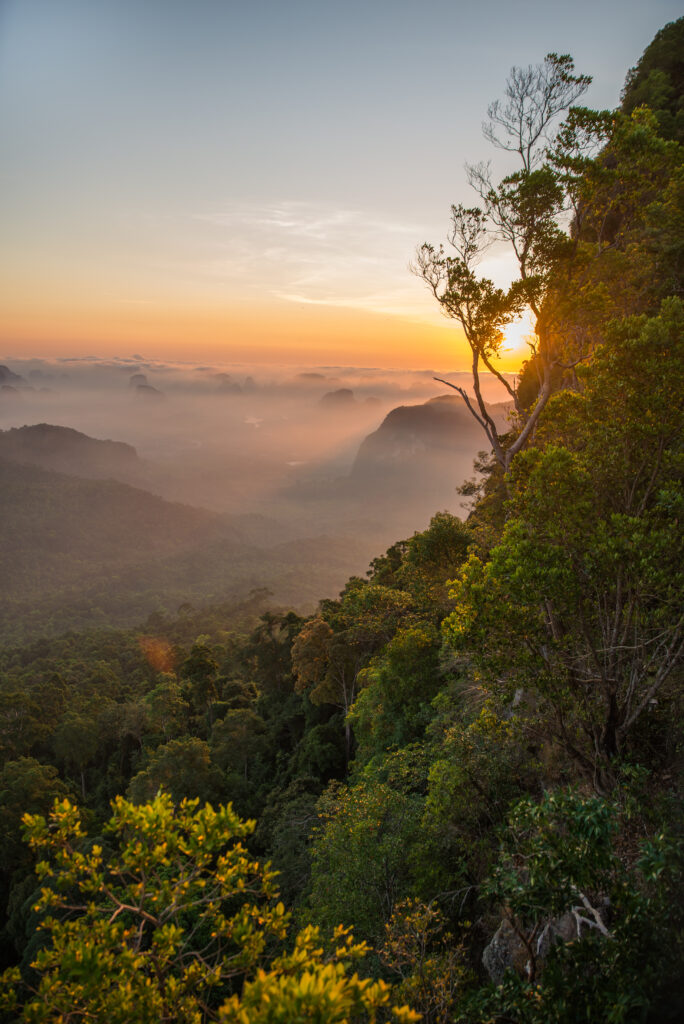
Nomadic Culture – A trip to Mongolia would not be complete without experiencing its nomadic lifestyle. Staying in a ger (yurt), joining local herders, and sharing in a traditional meal will immerse you in a way of life that’s still largely unchanged.
Lake Khövsgöl – Known as the “Blue Pearl of Mongolia,” Lake Khövsgöl is one of the most pristine lakes in the world. It offers trekking, horseback riding, and boating in the summer months.
If adventure travel isn’t your thing, but you still want to experience something special in Mongolia, head to its capital, Ulaanbaatar, for July 11-13th. You’ll witness one of the most unique international festivals, the Naadam Festival. Though thought of as a sports tournament, the truth is that it’s a powerful expression of Mongolian identity, rooted in history, tradition, and the enduring spirit of its people.
Known locally as “Eriin Gurvan Naadam” or “The Three Manly Games,” Naadam showcases the three traditional sports of Mongolia – wrestling, horse racing, and archery. These disciplines date back to the time of Genghis Khan, who valued them as essential skills for warriors of the Mongol Empire.
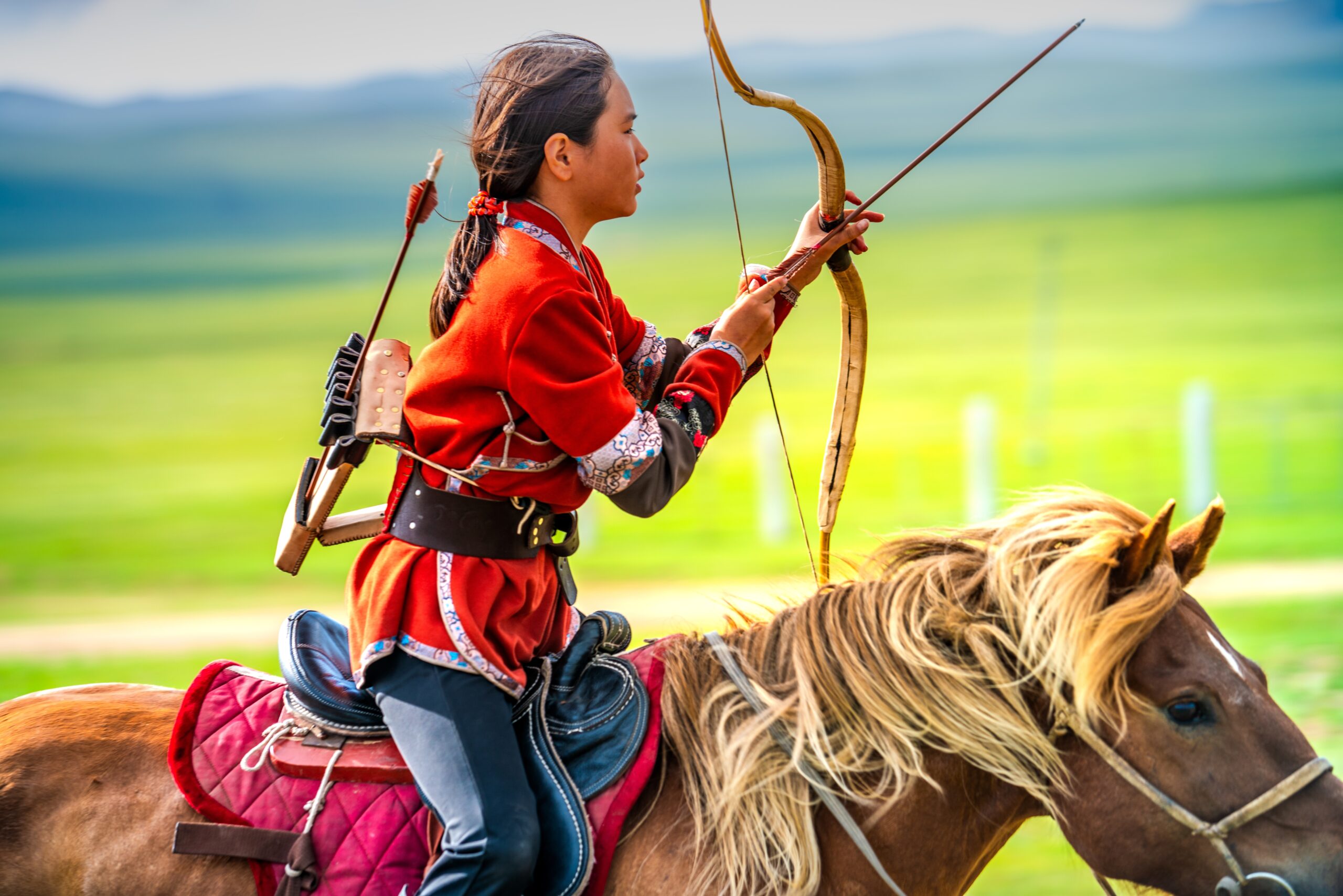
The festival begins with a vibrant opening ceremony at the National Sports Stadium, where a parade features athletes, dancers, musicians, and horsemen in traditional dress, accompanied by the beating of drums and the raising of the national flag. Then, it’s time for the games to begin.
The wrestling events (Bökh) are the centerpiece of Naadam. Wrestlers wear traditional attire—an open-chested jacket (zodog) and tight shorts (shuudag). Matches are often accompanied by symbolic eagle-like dances. There are no weight classes, and the aim is simple – make your opponent touch the ground.
But there are also captivating horse races. Unlike those in the West, Mongolian races can stretch up to 19 miles, and feature jockeys as young as five years old. But it’s not only about the jockeys. Horses are more celebrated than riders, and the fastest are showered with songs and milk offerings. It’s a breathtaking spectacle across the open steppe.
The final competition is in archery, where competitors use traditional Mongolian bows to shoot arrows at small leather rings called surs. Both men and women participate, wearing bright national costumes and demonstrating centuries-old techniques passed down through generations.
Naadam is a time for national pride and family celebration. Locals dress in traditional deel robes, feast on buuz (steamed dumplings), and enjoy singing, dancing, and storytelling. Markets spring up around festival grounds, selling handmade crafts, snacks, and souvenirs.
Practical Travel Tips for Mongolia
Transportation – Getting around Mongolia is best done with a local guide or in a 4×4, especially if you’re heading into the countryside. Many roads are unpaved, and distances can be vast.
Currency – The Mongolian tugrik is the local currency, and while major cities like Ulaanbaatar have ATMs, it’s recommended to carry cash for remote areas.
Health & Safety – Vaccinations for hepatitis A and B, typhoid, and rabies are recommended, and travelers should take precautions for altitude sickness in certain areas.

Majestic Landscapes Above the Arctic Circle
Rising sharply from the icy waters of the Norwegian Sea, the Lofoten Islands are a rugged archipelago unlike anywhere else on Earth. Located above the Arctic Circle, this remote string of islands offers travelers a rare combination of dramatic mountain peaks, pristine beaches, colorful fishing villages, and otherworldly light – from the Midnight Sun in summer to the Northern Lights in winter. Whether you’re an adventurer, photographer, or just a seeker of solitude, Lofoten is where raw nature and beauty converge.
Despite its northern latitude, Lofoten has a surprisingly mild climate thanks to the warming effect of the Gulf Stream. But it’s the contrasts that make this destination so captivating. Towering cliffs plunge into turquoise fjords, and rustic red rorbuer (fishermen’s cabins) cling to rocky shores beneath the skies. The islands offer a slice of traditional Norwegian coastal life with a modern twist, making them perfect for travelers seeking both cultural richness and natural beauty.
The best time to visit the island chain depends on your preference. In the summer (June to August), there are long days due to the midnight sun. It’s the best time for outdoor activities like hiking, fishing, and kayaking. Winter, however, brings the northern lights, which draw visitors seeking the spectacle of auroras dancing in the night sky.
What to Visit in the Lofoten Islands
Hiking and Outdoor Adventures – The islands are crisscrossed with trails that lead up to towering peaks with panoramic views. Popular hikes include Reinebringen, offering spectacular views of the village of Reine and the surrounding fjords.
Northern Lights – Winter visitors can experience the northern lights, one of nature’s most awe-inspiring displays. Lofoten’s dark skies and minimal light pollution make it a top spot for aurora enthusiasts.
Fishing Villages – The islands are dotted with quaint fishing villages such as Henningsvær and Nusfjord, where you can explore colorful wooden houses, enjoy fresh seafood, and witness the centuries-old tradition of cod fishing.
For those feeling the Viking vibe, make sure to visit The Lofotr Viking Museum in Borg, located on the island of Vestvågøya. The museum offers an immersive journey into Viking history and features artifacts and exhibitions that illustrate that period of history.
The museum features one of the largest known Viking longhouses, which was originally built around 500 AD and measures nearly 100 yards in length. It served as the seat of a powerful chieftain and is the only such structure confirmed through archaeological testing in Norway. The Longhouse includes living quarters, a feast hall, and a barn. Inside, you can wander around authentic Viking furnishings and displays.
The museum offers guided tours led by staff dressed in Viking attire, or you can use the museum’s multilingual audio guide system to move around the space. Afterwards, enjoy a Viking-inspired meal and beverage at the museum’s café. The museum is open year-round, with hours varying by season. It’s recommended to check the official website for the most current information.
Afterwards, head to the Viking Ship Harbor. Here, a reconstructed Viking ship is anchored, and it’s a great place to participate in Viking activities like archery, axe throwing, and balance games. During summer, you can even join sailing trips or try rowing the Viking ship.
Practical Travel Tips for the Lofoten Islands
Transportation – The islands are well connected by roads, ferries, and even flights to Svolvær, the main town on Lofoten. Renting a car is recommended for exploring the islands at your own pace.
Currency – Norway uses the Norwegian krone (NOK). Credit cards are widely accepted, but it’s good to have some cash for smaller purchases.
Health & Safety – Weather conditions can change quickly, so pack layers and be prepared for varying temperatures. The islands are generally safe but always check weather forecasts if you plan to hike.
An Uncharted Paradise of Biodiversity
Stepping into the Amazon Rainforest is like walking into another world. The air hums with the life of buzzing insects, distant bird calls, and the rustle of unseen animals in the underbrush. Stretching across nine South American countries, the Amazon is not only the largest rainforest on Earth, but also one of its most vital. For the adventurous traveler, it offers a rare opportunity to witness nature in its most raw, wild form.
Most visitors begin their journey in Brazil or Peru, with popular gateways like Manaus or Iquitos offering access to eco-lodges and river cruises deep into the jungle. From the moment you set out on a boat along the Amazon River, you’re immersed in a world of green – towering ceibas, tangled vines, and a sky often veiled by mist. Wildlife is abundant yet elusive. If you’re lucky, you might spot pink river dolphins, howler monkeys, or even a jaguar’s paw print in the mud.
Local guides enrich the experience with stories of medicinal plants, tribal traditions, and survival skills passed down through generations. Many tours now emphasize sustainable travel, ensuring that your presence supports conservation and local livelihoods rather than harms them.
The best time to visit the rainforest, again, depends on preference. The rainy season (December to May) is when the jungle is at its lushest, but the dry season (June to November) provides better access to more remote regions, and the weather is more comfortable for exploring.
What to Visit in the Amazon Rainforest
Wildlife Watching – The Amazon is home to incredible biodiversity, including jaguars, capybaras, sloths, howler monkeys, and a vast array of bird species, including the harpy eagle. Tours often include wildlife spotting by boat, jungle treks, and visits to indigenous villages.
Amazon River Cruise – The best way to explore the rainforest’s waterways is by boat. A river cruise offers a comfortable base to visit remote villages, watch wildlife, and explore tributaries of the Amazon River.
Rainforest Trekking – For the more adventurous, trekking through the dense jungle with an expert guide offers insight into the ecosystem. Learn about medicinal plants, jungle survival, and the importance of conservation.
For those seeking authentic connections, there are many opportunities to visit Indigenous Amazonian villages. Visiting one isn’t your average vacation. It’s a rare chance to experience life from a perspective rooted in ancestral wisdom and deep connection to the land.
There are several entry points into the heart of the jungle, and most journeys begin in one of the three main countries with strong Indigenous tourism programs.
In Peru, visitors start in Iquitos. From here, eco-tour operators offer guided trips to communities such as the Yagua or Bora tribes along the Amazon and Nanay Rivers.
In Ecuador, the Kichwa and Achuar peoples welcome visitors to remote jungle lodges like Sani Lodge or Kapawi Ecolodge. Both are run in partnership with Indigenous communities. Access is typically via a small plane from Quito to Coca, then by riverboat.
From Manaus, Brazil, travelers can arrange visits to villages near the Rio Negro. Some tours include cultural exchanges with Tukanoan or Dessana families. For a more immersive experience, investigate multi-day trips with NGOs that support Indigenous sovereignty.
These visits are not theatrical displays. They are real-life experiences. Visitors learn traditional hunting techniques, witness ceremonies, or participate in cooking local dishes with cassava, fish, and jungle fruits. You’ll likely sleep in simple guest huts or hammock lodgings and bathe in the river.
And don’t fear – language is not a barrier. Many hosts speak Spanish or Portuguese, and local guides often translate. What’s most powerful is the nonverbal connection. Shared meals, music, laughter, and respect.
Supporting Indigenous-led tourism not only provides income but also reinforces cultural pride and environmental stewardship. Always choose operators that collaborate directly with communities, follow ethical tourism guidelines, and minimize environmental impact. Be open, ask questions with humility, and never take photos without permission. Bring biodegradable toiletries, avoid single-use plastics, and consider donations to Indigenous-led conservation groups if you’re moved to give back.
Practical Travel Tips for the Amazon Rainforest:
Transportation – Traveling to the Amazon usually involves flights to major cities like Manaus (Brazil) or Iquitos (Peru), followed by riverboat transfers or jungle expeditions.
Health & Safety – Vaccinations for diseases like yellow fever, typhoid, and hepatitis A are strongly recommended, as are malaria-preventative medications. Bring insect repellent to avoid mosquito bites.
Eco-Tourism – Responsible tourism is key in the Amazon. Opt for eco-friendly tours that support local conservation efforts and benefit indigenous communities.
Mongolia’s vast wilderness, the pristine beauty of the Lofoten Islands, and the untamed wilds of the Amazon Rainforest offer some of the most extraordinary travel experiences. Whether you’re seeking the serenity of ancient steppes, the rugged charm of Arctic peaks, or the vibrant pulse of the world’s largest rainforest, these destinations provide an opportunity to connect with nature in its most raw, breathtaking form.

